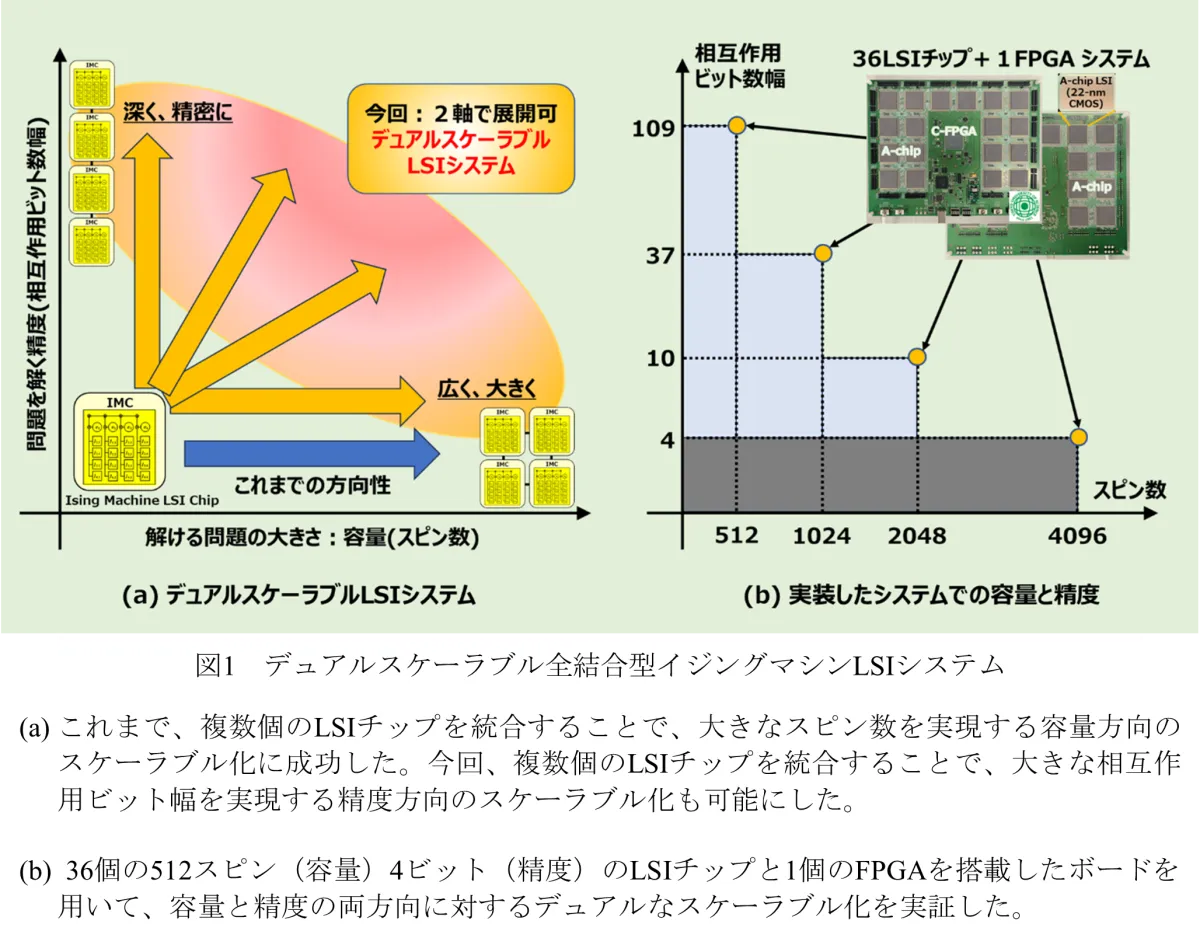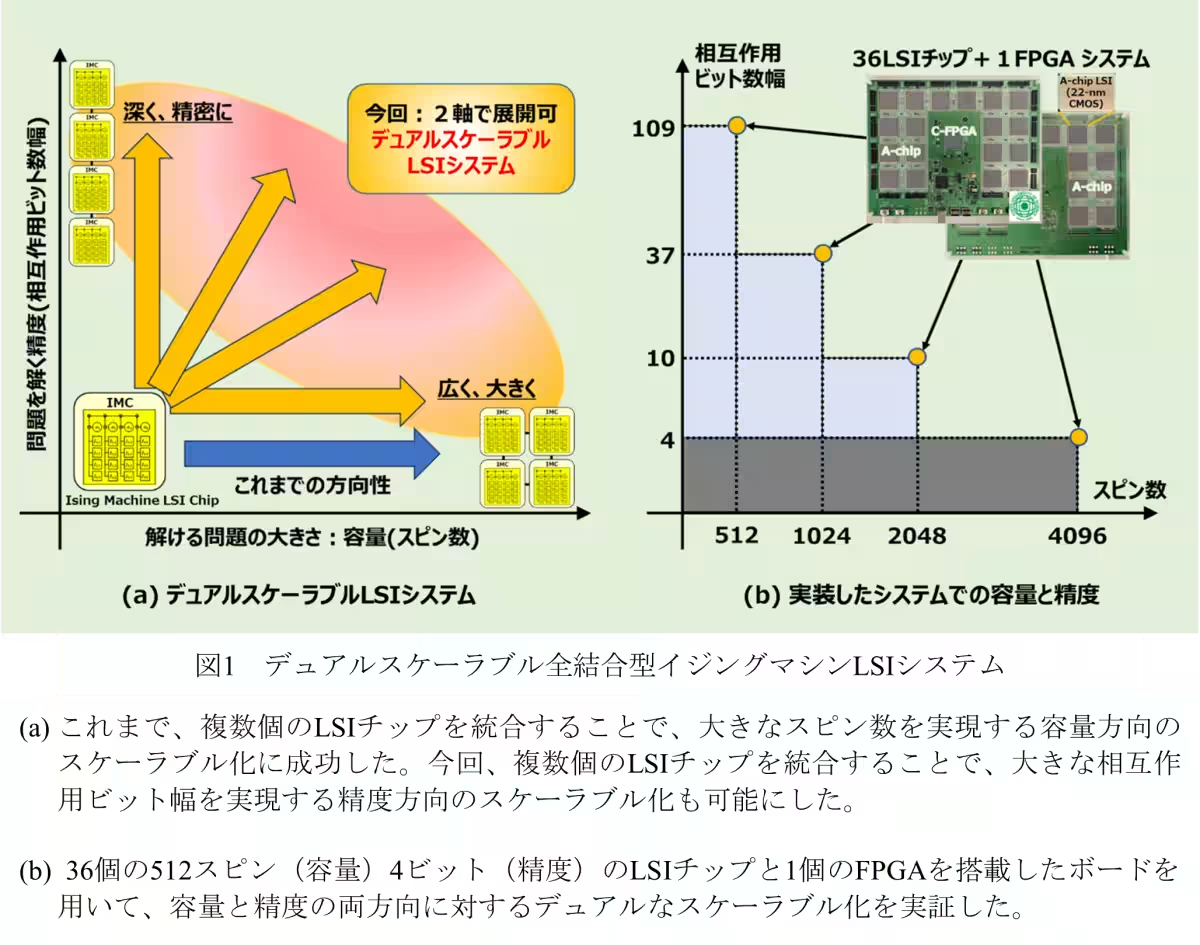

Tokyo University of Science Develops Dual-Scalable Ising Machine for Optimization Challenges
Innovations in Ising Machine Technology at Tokyo University of Science
In the fast-paced world of technology, optimization challenges appear across numerous sectors, from transportation routes to financial portfolio management. Addressing such complex combinatorial optimization problems requires innovative solutions that are both efficient and adaptable. Researchers at the Tokyo University of Science, led by Professor Takayuki Kawahara, have unveiled a remarkable advancement: a dual-scalable all-to-all Ising machine LSI system designed explicitly for these challenges.
The Challenge of Optimization at the Edge
Unlike traditional cloud-based solutions, edge environments often face significant constraints regarding power usage and configuration. This necessitates a flexible optimization of both capacity (the number of spins) and precision (interaction bit width). The team's novel dual-scalable Ising machine successfully addresses this need by allowing extensive and precise problem-solving capabilities even in energy-limited settings.
The newly developed system integrates multiple 4-bit, 512-spin LSI chips controlled by a single FPGA. This innovative design enables scaling to 10-bit, 2048-spin and 37-bit, 1024-spin configurations, demonstrating a significant leap in both capacity and accuracy. The flexibility of this system is key to meeting the demands of various combinatorial optimization scenarios where traditional brute force methods become impractical due to exponential growth in computation time.
Testing and Validation of New Approaches
In the course of their research, the team introduced two variants of this machine, designated DSAPS#1 (2048 spins, 10 bits) and DSAPS#2 (1024 spins, 37 bits). Both systems achieved impressive results, overcoming the MAX-CUT problem with over 99% accuracy compared to known solutions. This validation process not only highlighted the effectiveness of their approach but also underscored the importance of selecting the appropriate bit width based on the particular characteristics of the problem at hand.
Furthermore, the DSAPS#2 model, specifically, was able to successfully solve the knapsack problem, proving its worth for complex decision-making tasks. These experiments emphasize that understanding the nature of the optimization problems is crucial when designing such systems.
Educational Integration and Future Prospects
Beginning in 2025, the electric engineering program at Tokyo University of Science will incorporate a practical component to their curriculum involving these advanced Ising machines. All third-year students will engage in experiments that allow them to design and implement a fully functional Ising machine, creating a valuable learning opportunity to experience semiconductor design first-hand.
The research team plans on rolling out this initiative alongside their continued push for innovation in their technology, ensuring a fresh stream of talent actively contributing to advancements in the field.
Conclusion
The dual-scalable Ising machine represents a significant milestone in computational optimization technology. As its applications extend across various domains, it promises to facilitate real-world solutions to pressing problems, particularly in edge computing environments. Looking ahead, the ongoing developments at Tokyo University of Science are set to be influential in both academic and practical realms, as they continue to refine these technologies and inspire the next generation of engineers.
This research was published online in the international journal IEEE ACCESS on March 21, 2025, and is freely accessible for those interested in diving deeper into this pioneering work.
References
The research is supported by grants from the Japan Society for the Promotion of Science. The authors of the study, including Dong Cui and Taichi Megumi, have paved the way for integration of innovative technologies into educational frameworks, thereby emphasizing the critical intersection of theory and practice.
For additional insights, the official syllabus detailing course offerings can be found on the Tokyo University of Science website.






Topics Consumer Technology)










【About Using Articles】
You can freely use the title and article content by linking to the page where the article is posted.
※ Images cannot be used.
【About Links】
Links are free to use.